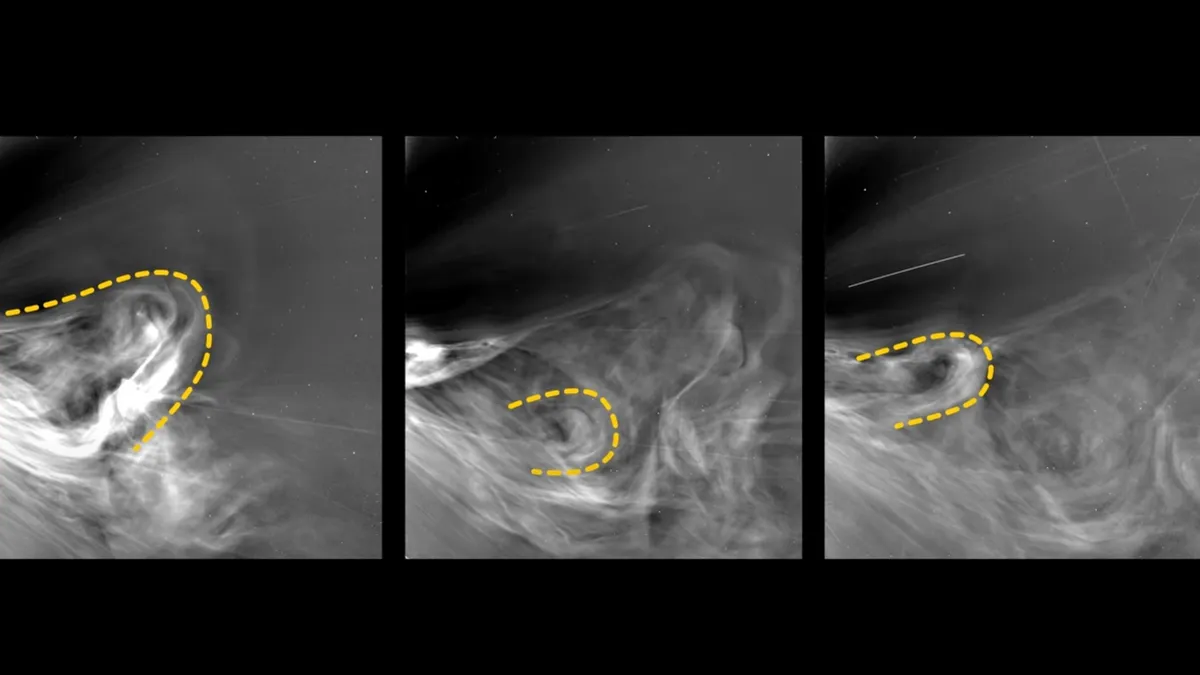
NASA has unveiled the closest-ever photographs of the Sun, taken by the Parker Solar Probe at an astonishing distance of just 3.8 million miles (6.1 million kilometers) from the star's surface. These groundbreaking images reveal critical features in the solar wind, which will aid scientists in comprehending the origins of this enigmatic space weather phenomenon and its implications for life on Earth.
The solar wind is a continuous stream of charged particles, primarily composed of protons and electrons, emanating from the Sun's outer atmosphere, known as the corona. This relentless torrent of matter travels through the solar system at speeds exceeding a million miles per hour. It interacts with magnetic fields and solar material ejected from the Sun, resulting in the formation of auroras, atmospheric stripping on planets, and electric currents that can disrupt power networks on Earth.
Grasping and predicting this space weather is crucial for safeguarding astronauts and spacecraft. It also minimizes the disruptions to terrestrial infrastructure that can occur during periods of intense solar activity.
Launched in 2018, the Parker Solar Probe is the first spacecraft to venture into the Sun's corona. It is equipped with an array of sophisticated scientific instruments, including the Wide Field Imager for Solar Probe (WISPR) and Solar Wind Electrons Alphas and Protons (SWEAP). This unmanned spacecraft endures extreme heat and intense radiation to deliver detailed data about the Sun and its immediate environment.
During its record-setting flyby of the Sun on December 24th of last year, the Parker Solar Probe captured images that illustrate the behavior of solar wind shortly after it exits the corona. Notably, it recorded collisions between unpredictable bubbles of plasma and magnetic fields, known as coronal mass ejections (CMEs). "In these images, we're observing the CMEs essentially piling up on one another," stated Angelos Vourlidas, the WISPR instrument scientist at the Johns Hopkins Applied Physics Laboratory. "We are utilizing this data to understand how the CMEs merge, which is vital for space weather forecasting."
There are two primary types of solar wind: fast solar wind, which travels at speeds of up to 800 kilometers per second, creating a relatively steady flow of matter, and slow solar wind, which is denser and more unpredictable, blowing in bursts rather than a continuous stream. Around Earth, we typically experience solar winds as a more stable breeze. However, earlier data from the Parker Solar Probe indicated that these gusts intensify as they approach the Sun, with added turbulence manifesting in the form of zigzagging magnetic fields known as switchbacks, located about 14.7 million miles (23.6 million kilometers) from the solar surface.
These switchbacks are believed to originate from magnetic funnels formed by visible patches on the Sun's exterior. In 2024, scientists determined that the fast solar wind is partially energized by this phenomenon. However, the origins of the slow solar wind remain largely a mystery. "The significant unknown has been: how is the solar wind generated, and how does it manage to escape the Sun's immense gravitational pull?" remarked Nour Rawafi, the project scientist for the Parker Solar Probe.
Understanding this continuous flow of particles, particularly the slow solar wind, presents a significant challenge due to the variety of properties these streams exhibit. However, with the data collected by the Parker Solar Probe, scientists are closer than ever to revealing their origins and evolution. Previous studies suggested the existence of two types of slow solar wind: Alfvénic, which features small magnetic switchbacks, and non-Alfvénic, which does not.
In its latest pass, the Parker Solar Probe has confirmed this long-held hypothesis. Moreover, the newly acquired detailed images are assisting scientists in discerning the origins of these distinct phenomena. The Alfvénic wind may arise from coronal holes in cooler regions of the corona, while non-Alfvénic winds could be emitted from hot magnetic loops known as helmet streamers. "We do not yet have a final consensus, but we have a wealth of new, intriguing data," said Adam Szabo, Parker Solar Probe mission scientist at NASA's Goddard Space Flight Center.
The Parker Solar Probe will continue to gather data as it orbits the Sun, with its next perihelion—the closest approach to the Sun's surface—anticipated on September 15th.